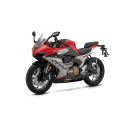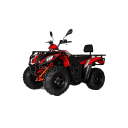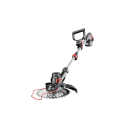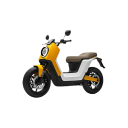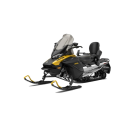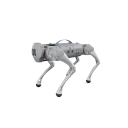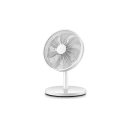-
7
-
2025-10-17 09:48:47
If you’ve ever stood by a frozen lake and watched someone tear across it on a snowmobile, you’ve probably thought, “That thing’s flying.” And you’d be right — these machines can move. But the real answer to how fast they go isn’t as simple as throwing out one number. It depends on the kind of sled, the snow beneath it, and the person squeezing the throttle.
The Average Trail Sled

Most of the snowmobiles people use for weekend rides are what we call trail sleds. They’re quick, but not crazy-fast. A lot of them run 600cc or 800cc engines, putting out around 120–150 horsepower. On a solid, icy trail, that’s good for roughly 90 to maybe 110 miles per hour if you push it hard.
But let’s be honest — most riders never stay at full speed for long. Forty or fifty feels fast enough when the wind is biting your cheeks and the snow’s spraying from the track. At that speed, every bump, every change in the surface hits you straight through your hands and arms. It’s not like driving a car; it’s pure, rough speed.
The Fast and the Fearless — Racing Sleds

Now, if you’ve ever seen those custom racing sleds — that’s another story. These things are stripped, tuned, and built purely for one thing: speed.
Some drag sleds hit 120 to 150 mph, and there are even a few mad turbo builds that have broken 200 mph on ice. That’s not something you try on your local trail — those runs need a flat, frozen stretch and a rider with nerves of steel.
At that speed, one tiny mistake and you’re not so much riding as skimming for your life.
Mountain and Utility Sleds
Then you’ve got the real workhorses — mountain sleds and utility machines. They’re not built for bragging rights on speed. They’re built to climb, haul, and dig through the deep stuff.
Mountain sleds have long tracks and huge paddles, giving them grip in soft powder. Top speed? Around 70 to 90 mph, but most of the time you’re crawling up ridges at half that. The focus is torque and traction, not speed.

Utility sleds are the muscle machines — pulling trailers, logs, fuel drums, whatever you throw at them. Heavier frames, lower gears, usually topping out around 50 to 70 mph. They’re more about grunt than glory.

Why Speed Isn’t Always the Same
Snowmobiles can be moody — one day they feel like rockets, the next they feel like you’re towing a house.
Snow type changes everything. Hard-packed trails are like highways; deep powder is more like quicksand.
Cold weather helps engines breathe — dense air means more power.
Altitude kills speed — thinner air, less oxygen, less punch.
Rider weight and position make a difference too. Crouch low, tuck in — you’ll squeeze out a few more mph.
Take the same sled to a mountain track and you’ll watch it lose twenty miles an hour easily.
What Speed Feels Like
Speed on a snowmobile doesn’t feel like speed in a car — not even close. There’s no cabin, no protection, just you, the wind, and the machine rattling beneath you.
At 40 mph, you’re grinning already — skis skipping, snow flying, hands going numb.
At 70, your shoulders tense, your eyes water, and you start leaning hard into the turns.
At 100, the whole world narrows down to a white blur and the sound of the engine roaring.
That’s why people get hooked. It’s not about chasing numbers. It’s that rush — that raw, edge-of-control feeling that only comes from flying across frozen ground.
Play It Safe
Now, all that fun comes with a bit of risk. Snow hides plenty of trouble — rocks, logs, ditches, even thin ice. And while today’s sleds have brilliant brakes, stopping on snow still takes distance.
So, proper gear is a must. Helmet, goggles, padded suit, gloves — not just for the look. They genuinely save lives.
And if you’re out on lakes, check the ice first. It takes only one bad spot to ruin a good day.
So, How Fast Do They Really Go?
If you’re just after numbers:
Trail sleds: 80–110 mph
Mountain and work sleds: 50–90 mph
Race sleds: 120–150 mph or more
But here’s the thing — speed isn’t really what it’s about. It’s that noise when the engine growls, that jolt when the track grips, and that moment when you’re flying over snow that shouldn’t even hold you.
You can’t measure that with a speedometer. You just feel it — in your chest, in your hands, and in the grin that sticks long after you stop.



